- عنوان کتاب: Introduction to Chemical Reactor Analysis, Second Edition
- نویسنده: R . E . H a y e s
- حوزه: تحلیل شیمیایی
- سال انتشار: 2013
- تعداد صفحه: 559
- زبان اصلی: انگلیسی
- نوع فایل: pdf
- حجم فایل: 12.5 مگابایت
حدود 10 سال از انتشار چاپ اول این کتاب می گذرد و احتمالاً مناسب است که با ارائه توجیهی برای نگارش اولیه کتاب و تولید چاپ دوم شروع کنیم. همانطور که در مقدمه چاپ اول اشاره شد، کتاب های درسی خوبی در زمینه مهندسی واکنش های شیمیایی موجود است. بسیاری از کتاب های موجود در زمینه مهندسی واکنش های شیمیایی هم عالی و هم جامع هستند. (Elements of Chemical Reaction Engineering اثر اسکات فوگلر [1999] و مهندسی واکنش شیمیایی توسط Octave Levenspiel [1999] هر دو کلاسیک در این زمینه در نظر گرفته می شوند.) با این حال، این جامعیت می تواند باعث سردرگمی آن ها برای نوزادان شود. اکثر کتاب ها حاوی مطالب کافی برای چندین دوره در زمینه مهندسی واکنش های شیمیایی هستند، اگرچه در برخی از کتاب ها موضوعات پیچیده تر فقط به آرامی مورد بررسی قرار می گیرند. سایر متون حاوی ترکیبی از مطالب در سطح کارشناسی و کارشناسی ارشد است که می تواند پیشرفت آسان را برای مبتدیان در این مبحث دشوار کند. بنابراین، این کتاب به معنای جامع یا کامل بودن آن نیست، و همچنین قرار نیست راهنمایی برای قدردانی از راکتور ارائه دهد یا دیدگاههای تاریخی دقیقی ارائه دهد. در عوض، در نظر گرفته شده است که مقدمه ای موثر برای تجزیه و تحلیل راکتور ارائه دهد و حاوی مطالب کافی برای پوشش دادن در دو ترم حدود 35 تا 50 دقیقه سخنرانی در مورد تجزیه و تحلیل راکتور است. در پایان خواندن این کتاب و بررسی مسائل و مثالها، خواننده باید دانش پایه کافی برای انجام بیشتر محاسبات رایج مهندسی واکنش که برای مهندس معمولی مورد نیاز است، داشته باشد. سینتیک شیمی و طراحی راکتور احتمالاً به عنوان تخصص مهندسی باقی می ماند که مهندس شیمی را از سایر انواع مهندس جدا می کند. با این حال، تسلط دقیق بر این موضوع برای فارغ التحصیلان معمولی مهندسی شیمی در سطح لیسانس ضروری نیست، زیرا تنها چند درصد از این فارغ التحصیلان در مشاغل تحقیقاتی و طراحی که شامل محاسبات پیچیده مهندسی واکنش شیمیایی است، درگیر می شوند. از سوی دیگر، تعداد قابل توجهی از مهندسان شیمی در طی مراحلی از شغل خود با مسئولیت هایی که شامل عملیات یک کارخانه فرآیندهای شیمیایی است، به کار گرفته می شوند. به عنوان مهندسان فرآیند انتظار می رود که تفسیرهای عینی در مورد عملکرد راکتور و ابزارهای بهبود عملکرد آن ارائه دهند. در این راستا برخی از آموزش ها در زمینه مهندسی واکنش های شیمیایی برای درک عوامل مؤثر بر عملکرد یک راکتور شیمیایی و در نتیجه تأثیر اقدامات افزایش عملکرد ضروری است. بنابراین، این کتاب برای اکثر دانشآموزانی که عمومگرا خواهند بود، به جای اقلیت کوچکی که در هنر طراحی راکتور متخصص خواهند شد، هدایت میشود. برای این، ویرایش دوم، دامنه مطالب به طور قابل توجهی افزایش یافته است. علاوه بر تنظیم مجدد مطالب چاپ اول و اصلاح خطاهای اجتناب ناپذیر، پنج فصل در مورد مهندسی واکنش کاتالیزوری اضافه شده است. در حالی که نسخه اول برای یک دوره واحد در تجزیه و تحلیل واکنش طراحی شده است، و بنابراین بر سیستم های همگن متمرکز شده است، این ویرایش برای دو دوره در مهندسی واکنش طراحی شده است. این کتاب از مجموعه ای از یادداشت های سخنرانی در تجزیه و تحلیل راکتور که در دوره های کارشناسی ارشد در مهندسی واکنش استفاده می شد، رشد کرد. همانطور که گفته شد، برای دو دوره در تجزیه و تحلیل واکنش طراحی شده است. باید بتوان تمام مطالب ارائه شده در متن را در دو دوره شامل حدود 35 سخنرانی، هر یک 50 دقیقه مدت و دوره های حل مسئله 10 تا 12 ساعته پوشش داد. همانطور که اشاره شد، این کتاب درسی بر اساس مطالب دو درس در مقطع کارشناسی مهندسی واکنش های شیمیایی است که در گروه مهندسی شیمی و مواد در دانشگاه آلبرتا تدریس می شود. دانشجویانی که این دوره ها را می گذرانند قبلاً دروس ترمودینامیک، روش های عددی، انتقال حرارت و جریان سیال را گذرانده اند. برخی از دانش در همه این زمینه ها فرض شده است، و این مبانی به طور مفصل مورد بحث قرار نمی گیرد، اگر اصلا وجود داشته باشد. استثنا ترمودینامیک واکنش های شیمیایی است. به دلیل اهمیت این موضوع برای مهندسی واکنش های شیمیایی، بیش از یک اشاره گذرا به این حوزه شده است. البته لازم به ذکر است که مطالب مربوط به ترمودینامیک واکنش شیمیایی مختصر است و صرفاً به منظور ایجاد یک تجدید قوا برای دانشآموزی است که دانش کمی زنگ زده است. برخی از دانش قبلی از سینتیک برای درک مطالب این کتاب مفید است. ترتیب ارائه فصول نشان دهنده توالی مطالب ارائه شده در دوره های نویسنده در مهندسی واکنش شیمیایی است. برخی از خوانندگان ممکن است تعجب کنند که ببینند توازن های مول اصلی راکتور قبل از توسعه دقیق سینتیک ها و عبارات نرخ مورد بحث قرار می گیرند. این انتخاب عمدی است و تجربه نویسندگان را منعکس می کند.
It has been about 10 years since the first edition of this book was published, and it is probably appropriate to begin by offering a justification for writing the book initially, and generating a second edition. As noted in the preface to the first edition, there are many good textbooks on chemical reaction engineering in existence. Many of the existing books on chemical reaction engineering are both excellent and comprehensive. (Elements of Chemical Reaction Engineering by Scott Fogler [1999] and Chemical Reaction Engineering by Octave Levenspiel [1999] are both considered classics in the field.) However, it can be this very comprehensiveness that may make them confusing to the neophyte. Most books contain material sufficient for several courses on chemical reaction engineering, although in some books the more complex topics are touched on only lightly. Other texts contain a mix of undergraduate and graduate level material, which can also make it difficult for the beginner in this topic to progress easily. This book, therefore, is not meant to be either comprehensive or complete, nor is it intended to offer a guide to reactor appreciation or give detailed historical perspectives. Rather, it is intended to provide an effective introduction to reactor analysis, and contains sufficient material to be covered in two terms of about 35–50 min lectures each on reactor analysis. At the end of reading this book, and working the problems and examples, the reader should have a good basic knowledge sufficient to perform most of the common reaction engineering calculations that are required for the typical practicing engineer. Chemical kinetics and reactor design probably remain as the engineering specialization that separates the chemical engineer from other types of engineer. Detailed mastery of the subject is not, however, essential for the typical chemical engineering graduate at the Bachelor level, because only a few percent of such graduates become involved in research and design careers that involve complex chemical reaction engineering calculations. On the other hand, a significant number of chemical engineers are employed during some stage in their careers with responsibilities involving the operation of a chemical process plant; as process engineers they are expected to provide objective interpretations regarding reactor performance and means of improving its operation. In this regard some training in the area of chemical reaction engineering is essential to enable the understanding of the factors that affect the performance of a chemical reactor, and thus to effect performance- enhancing measures. This book is thus directed to the majority of students who will be generalists, rather than the small minority who will become specialists in the art of reactor design. For this, the second edition, the scope of the material has been significantly enhanced. In addition to rearranging the material from the first edition, and the correction of the inevitable errors, five chapters have been added on catalytic reaction engineering. Whereas the first edition was designed for a single course in reaction analysis, and thus focused on homogeneous systems, this edition is designed for two courses in reaction engineering. This book grew from a set of lecture notes in reactor analysis that was used in the senior year undergraduate courses in reaction engineering. As mentioned, it was designed to be used for two courses in reaction analysis. It should be possible to cover all of the material presented in the text in two courses consisting of around 35 lectures, each of 50 min duration, and 10–12 1 h problem-solving periods. As noted, this textbook is based on the contents of two undergraduate courses in chemical reaction engineering taught in the Department of Chemical and Materials Engineering at the University of Alberta. The students taking these courses have previously taken courses in thermodynamics, numerical methods, heat transfer, and fluid flow. Some knowledge in all of these areas is assumed, and these basics are not discussed in detail, if at all. The exception is thermodynamics of chemical reactions. Because of the importance of this topic to chemical reaction engineering, more than a passing mention is made to this area. It should be noted, however, that the material on chemical reaction thermodynamics is brief, and is intended only to provide a refresher to the student whose knowledge is a bit rusty. Some prior knowledge of kinetics is useful, for understanding the material in this book. The order in which the chapters are presented reflects the sequence of the material as presented in the author’s courses in chemical reaction engineering. Some readers may be surprised to see that basic reactor mole balances are discussed prior to the detailed development of kinetics and rate expressions. This choice is deliberate, and reflects the authors’ experience.
این کتاب را میتوانید از لینک زیر بصورت رایگان دانلود کنید:
Download: Introduction to Chemical Reactor Analysis, Second Edition








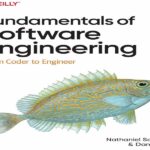

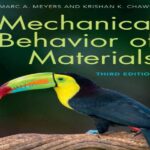
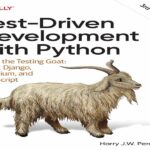

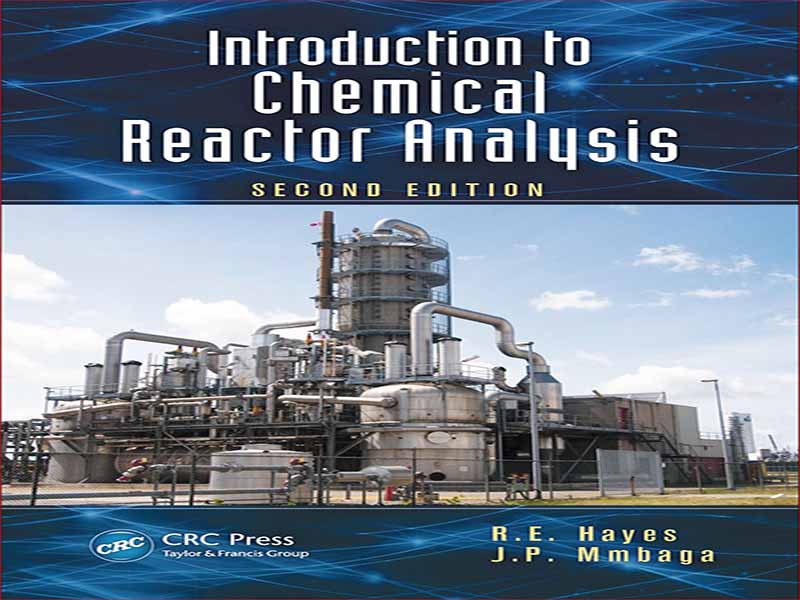




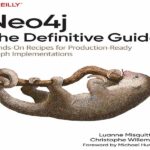


















نظرات کاربران